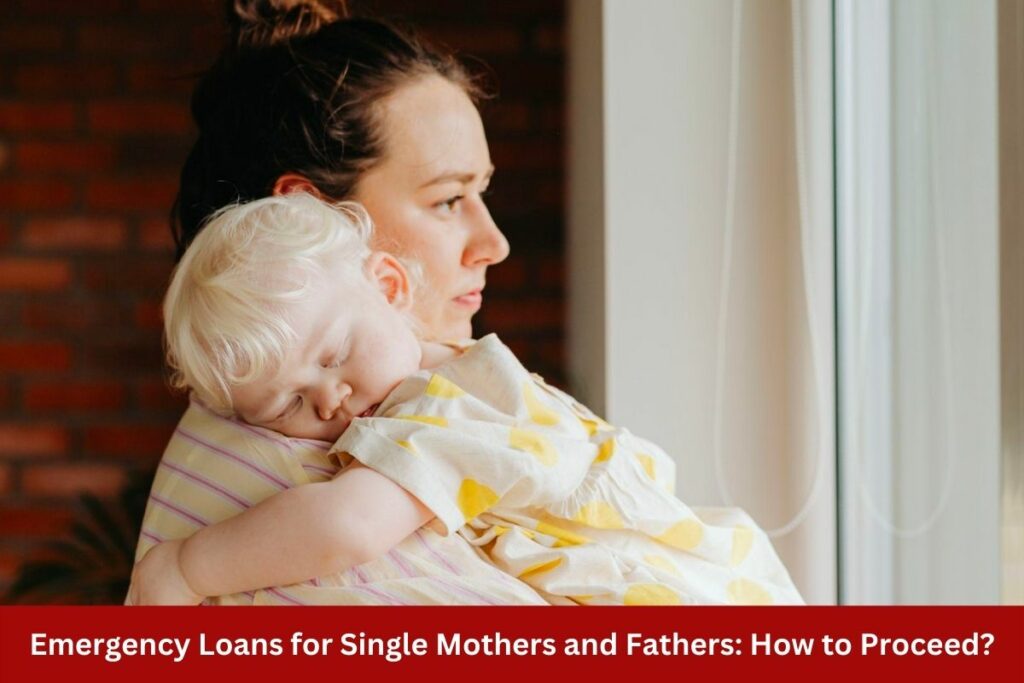After her youngest of four children graduated from college in May 2020, Misty Wyscarver had accrued a total of $194,000 in debt, according to Wyscarver’s financial disclosure statement. Her parent PLUS loans, which she had taken out over nine years, were in addition to her children’s college loans.
Wyscarver, 55, of Caldwell, Ohio, worked as a public librarian and was only dimly aware of a federal program that provides debt forgiveness to borrowers who work in eligible positions such as hers.
However, it wasn’t until her eldest kid brought up the possibility of participating in the Public Service Loan Forgiveness (PSLF) program that she looked into it.
Borrowers who are federal parent PLUS students are one of the fastest-growing higher education loan market groups. The parent PLUS loan market was worth $105 billion by the end of 2021, representing a 35% rise from only five years earlier.
The average parent borrows around $24,400, but many borrow far more. Because these loans do not have debt limits, as do student loans, parents might rapidly find themselves in financial problems if they borrow more than their income can support.
Because parents have fewer years left in their working careers and have restricted repayment alternatives, a large PLUS debt may rapidly disrupt retirement plans.
However, there are relief valves available, including the possibility of having your debts forgiven.
Public service workers may be eligible for Public Service Loan Forgiveness, and parents with modest incomes may be able to reduce the amount of money they pay each month in their loan payments.
Both alternatives necessitate enrolling in what is known as the Income-Contingent Repayment Plan, which sets monthly payments at 20 percent of your income and forgives your amount once either 10 years (PLSF) or 25 years (ICR) of qualifying payments have been made on your debt.
Though there are certain requirements to meet to get your student debts forgiven via any of these techniques, the procedure may become more difficult if you are borrowing for numerous children at the same time. What you need to know about navigating the procedure is as follows:
Know the eligibility criteria for Public Service Loan Forgiveness
Setting up your account requires some research to verify that you satisfy all criteria.
The parent must be working full-time with a qualified employer, either a non-profit organization or the government, to qualify for benefits (local, state, federal, tribal, or the military).
According to Fred Amrein, CEO of PayforEd, a student debt relief firm, working for a non-profit organization while hired by a private contractor, such as a contracting doctor with an emergency room, does not qualify. You cannot transfer your debts to a graduate employed in a suitable position.
ACCORDING TO THE RULES, parents PLUS loans are not eligible for forgiveness on their own. Second, you must enroll in a repayment plan based on your income.
Suppose you want to take advantage of it. In that case, you’ll need to combine your PLUS loans into a Direct Consolidation Loan to be qualified for the Income-Contingent Repayment Plan, which is the only income-driven repayment option accessible to parent borrowers at the time of consolidation.
Must read: Health Care Workers Transform Their Minds on Corona Virus Vaccines
Every year, you must recertify your income and the size of your family. You may see fluctuations in your payment amount, which is fixed at 20 percent of what the government deems as “discretionary income,” depending on your wages. Private loans are not eligible for the ICR or the PSLF. They must be paid differently.
Then, while working for an eligible employer, you must make 120 payments to the IRS. Payments for a decade of public sector service do not have to be made in consecutive installments or by the same employer to be eligible.
However, you should submit the necessary papers to the Education Department on an annual basis to certify your position and ensure that you continue to work in a qualifying position.
As Wyscarver discovered, this is one of the procedures that may need a series of hoops to be cleared before proceeding. Her yearly job recertification form was refused twice during the previous year before her servicer realized the issue and fixed it.
Finally, keep in mind that if you’ve previously been paying PLUS loans while working in a position that qualifies for PSLF but wasn’t on the correct payment plan, you won’t be able to obtain retroactive credit toward forgiveness (at least for the time being).
To do this, students may get a temporary waiver from the Education Department; however, parent borrowers were not included in the modified requirements due to the temporary waiver.
Evaluate your income
Although debt forgiveness seems enticing to all borrowers, these programs are not appropriate. Specifically, what is the amount of money you borrowed (or want to borrow), and what is your source of income?
According to Meagan Landress, a certified student loan consultant with Student Loan Planner, “the purpose of working toward forgiveness is to pay as little as possible to maximize the forgiveness.”
Consequently, if your wages are large compared to the amount of debt you have, this may not be the most effective method of paying down your debt.
With this in mind, the PSLF program will not provide many advantages if your income-based payments are so big that you have no remaining amount to forgive after the 120-payment period.
However, if you earn $50,000 a year, like Wyscarver does, and have a significant amount of debt, it makes sense. She estimates that her monthly payment would be around $2,400 on a regular 10-year repayment plan. It costs around $250 per month under the ICR plan.
Question yourself when you’ll retire.
Another factor to consider is the chance of staying at the proper employment for a long enough period to receive forgiveness. A word of caution: although you may be planning on working until your late 60s or early 70s, research has shown that individuals often overestimate their remaining years in the profession.
There are many things that you cannot anticipate, including the possibility of losing or being pushed out of your work, as well as the need to take time off to care for an aging parent, spouse, or kid.
Rachel Fishman, assistant director for research with the Education Policy program at New America, adds that if the PSLF does not succeed for whatever reason, “you need to have a Plan B.”
Strategize who handles the loans
According to Amrein, who consults with families on options for paying for and borrowing for college, the parent with qualified employees, such as a government post or a position with a non-profit organization, should take out the PLUS loans.
Because Wyscarver and her spouse file their taxes separately, her loan payment is based only on her earnings. She claims that they are losing out on other tax benefits but that it is the only option to make her income-based payment as low as possible.
Be cautious regarding when you consolidate.
To optimize your debt forgiveness, you cannot make payments to stay ahead while your kid is in school since payments made during “in-school status” or the 6-month grace period after graduation do not contribute toward PSLF.
According to Fishman, you must be certain that you will continue to work in your qualifying employment for at least 14 years, including the four years your kid is in college and the ten years of payments after they graduate, to qualify.
If you have two or more children, you’ll need to include that in your schedule. According to Landress, it may make sense to wait until after the younger kid graduates before consolidating all of your debts.
The reason for this is because after you combine your student loans for your first youngster’s schooling, the 120-payment plan will begin without your debts for your younger student folded into the new loan consolidation.
It would be necessary to combine the loans for your younger student(s) individually, which would imply that you would have two (or more) 120-payment plans with different completion dates.
When you combine your older student loans first and then your younger student loans with them, you will reset the clock on payments, reversing any progress you’ve made toward forgiveness.
As a result, it may be beneficial to place debts from an older student on deferment while the younger student is enrolled in school. Landress explains that after the younger student has graduated, “you enter repayment to seek PSLF from there and have them all forgiven at the same time.”
What To Do If PSLF doesn’t work out?
If PSLF does not work out for you, you must apply for it after making the 120 qualifying payments required under the ICR plan, which you have already registered in. The debt is forgiven when 300 ICR payments have been made.
Of course, this may mean that you’ll be paying off parent loans long into your 70s or 80s, which isn’t exactly what you had in mind for your retirement.
“Twenty-five years is a long time to have a monthly payment, particularly if you’re retired,” Landress says of the financial commitment.
However, the ICR plan assists low-income borrowers burdened by huge debt burdens. By doing so, they can avoid the severe repercussions of defaulting, during which the federal government may take earnings or Social Security payments, as well as confiscate tax refunds.
Consider the scenario in which you lose your work at the age of 64 and are forced to rely only on a little Social Security cheque. According to Fishman, you may be able to make a zero-dollar payment that will still contribute toward forgiveness under the ICR scheme.
Start with studentaid.gov to learn more about the PSLF and ICR forgiveness programs. Consult with your loan servicer to learn more about your choices. According to Fishman.
For more extensive guidance on tax strategies and retirement planning for borrowers, it may be worthwhile to talk with a financial adviser with certified student loan planner accreditation and a background in taxation.
If you haven’t already done so, examine if your kid can choose an educational route that involves less or no parent borrowing. It is likely the most crucial consideration if you haven’t taken out PLUS loans yet.
Wyscarver claims she has no regrets about the schooling she provided for her children.
However, she advises parents to be aware of the implications of borrowing nearing retirement and regret that she did not get more assistance on her repayment alternatives. According to her, “I would have joined up for PSLF as soon as I could have.”




